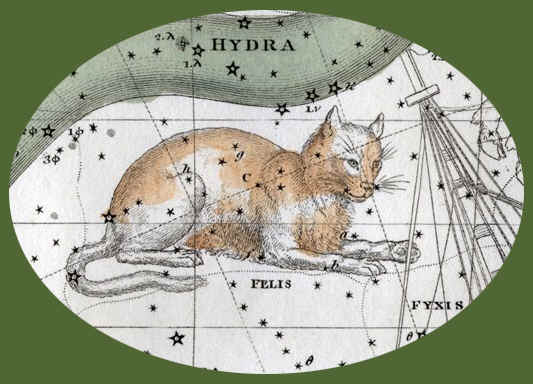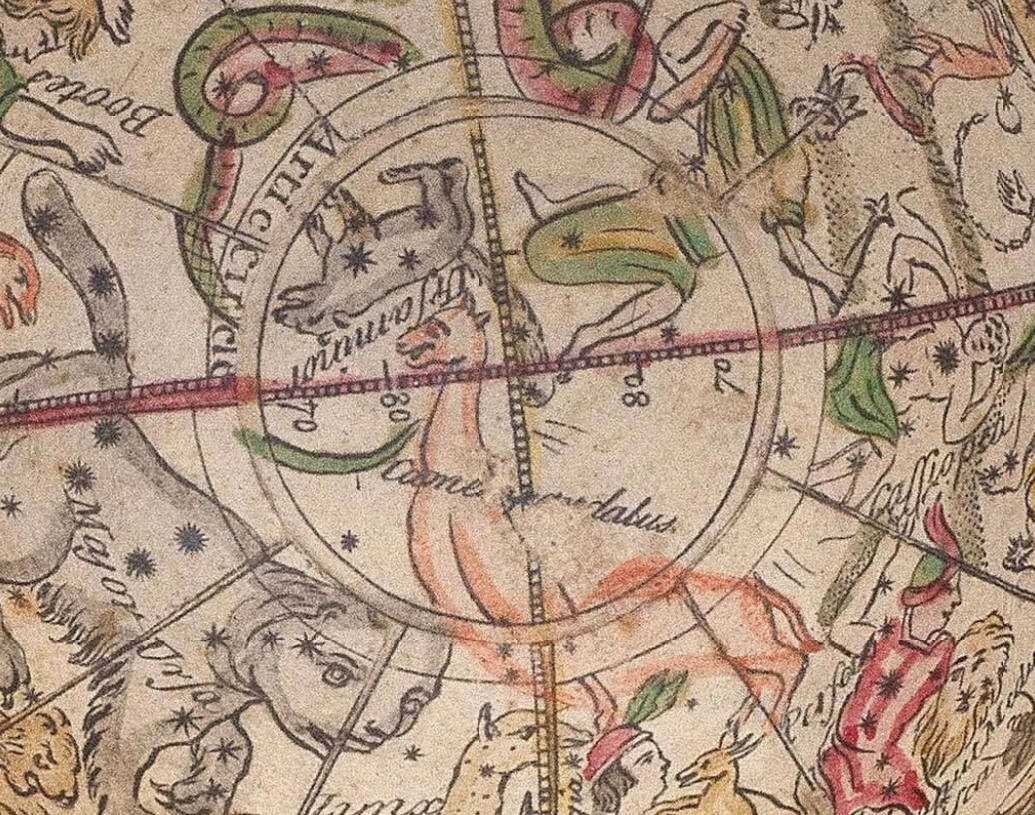
|
Nathaniel Hill |
A New Terrestrial Globe by Nath Hill, London 1754 e Celestial Globe, London 1755
|
Nathaniel Hill
A New Terrestrial Globe by Nath Hill, London 1754
e
Celestial Globe, London 1755

Per cortesia di
Pubblico le immagini e gli articoli che vengono dedicati a coppie di globi terrestri e celesti di Nathaniel Hill prodotti a Londra tra il 1754 e il 1755
Biography
Nathaniel Hill (fl1746-1768) was a surveyor, mathematician and instrument maker based in London. He started his career as an apprentice globemaker to Richard Cushee, and he later took on Cushee’s nephew, Leonard, as his apprentice. His shop was at the Globe and the Sun in Chancery Lane, and his trade card advertised “New and Correct Globes of 3, 9, 12 and 15 inches”. Hill’s most popular items were the three and nine-inch globes, which he published either as pocket globes, mounted on a stand or for orreries. After Hill’s death, his business was continued by Thomas Bateman, who took on John Newton and William Palmer as apprentices.
Prima coppia di globi pubblicati su Sic itur ad astra, il catalogo di stampe e libri d’arte del 2023 della Galleria Daniel Crouch Rare Books con sede a Londra e a New York che li vende per l’importo di 20.000 dollari.
A New Terrestrial end Celestial Globe, London 1754
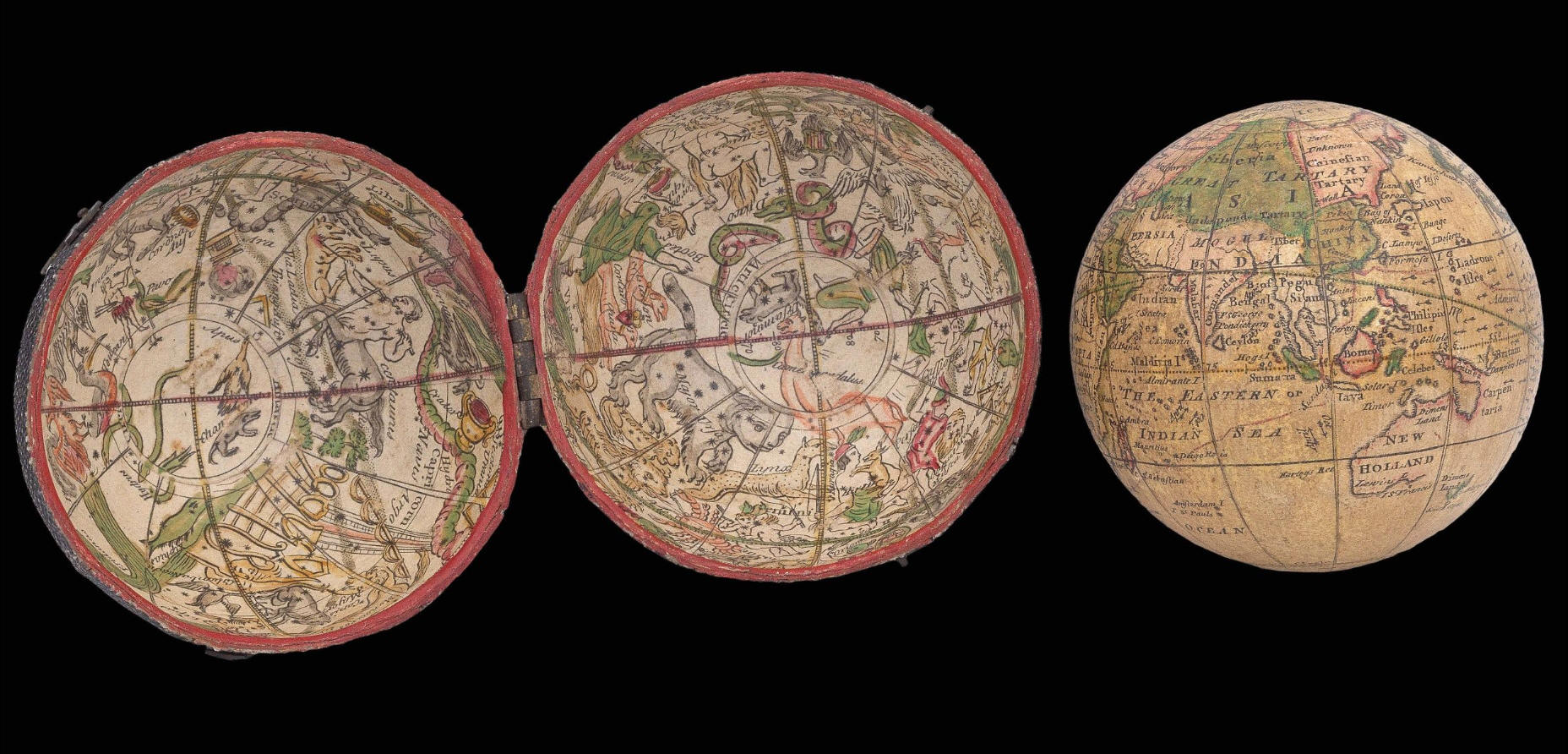
Dimensions Diameter
70 mm (2.75 inches).
Geography
This pocket globe by Hill shows the rapid changes in European knowledge of the
world. Although it bears the same date as another globe he published in 1754, it
shows some significant revisions, the most obvious of which is the addition of
trade winds. In Asia, the Caspian Sea has been reduced in width to reflect the
findings of the Russian nautical surveyor, Feodor Soimonov, who thoroughly
surveyed the sea for the first time between 1719 and 1727, and published his
findings in 1731. The most significant development is the redrawing of eastern
Russia, influenced by Vitus Bering’s second expedition to the Kamchatka
Peninsula. Bering spent ten years (1733–1743) exploring along northern Russia,
mapping the Arctic coast of Siberia, and reaching Alaska in North America.
Bering died of scurvy during the voyage, and an island off the Kamchatka
Peninsula was eventually named in his honour. Stephan Krasheninnikov published
the first detailed description of the peninsula, ‘An
Account of the Land of Kamchatka’ in 1755, which is possibly where Hill acquired
the new information.
Astronomy
The celestial gores, lining the case, are geocentric in orientation and, in a
departure from most previous pocket globes, are concave, thus depicting the
constellations as seen from earth. Previous pocket globes, most notably John
Senex’s pocket globe of 1730, simply used gores intended for celestial globes,
thus rendering the night sky in reverse when pasted to the inside of the case.
The difference is most noticeable in the orientation of Ursa Major, with the
bear facing in the other direction.
Bibliography
for reference see Dekker, pp.355–357 Hide info
Dekker, Elly. (1999). Globes at Greenwich: A Catalogue of Globes and Armillery Spheres at the National Maritime Museum in Greenwich. Oxford: Oxford University Press and the National Maritime Museum.
Van der Krogt, Hil 1 and Hil 4 Hide info
Van der Krogt, Pieter (1993). Globi Neerlandici: the production of globes in the Low Countries. Utrecht: HES.
Worms and Baynton-Williams, pp.318–319. Hide info
Worms, L. and Baynton-Williams, A. (2011). British map engravers. London: Rare Book Society.
For Hill’s 1754 pocket globe see Dahl and Gauvin, pp.93–95 (Stewart Museum 1979.28.2)
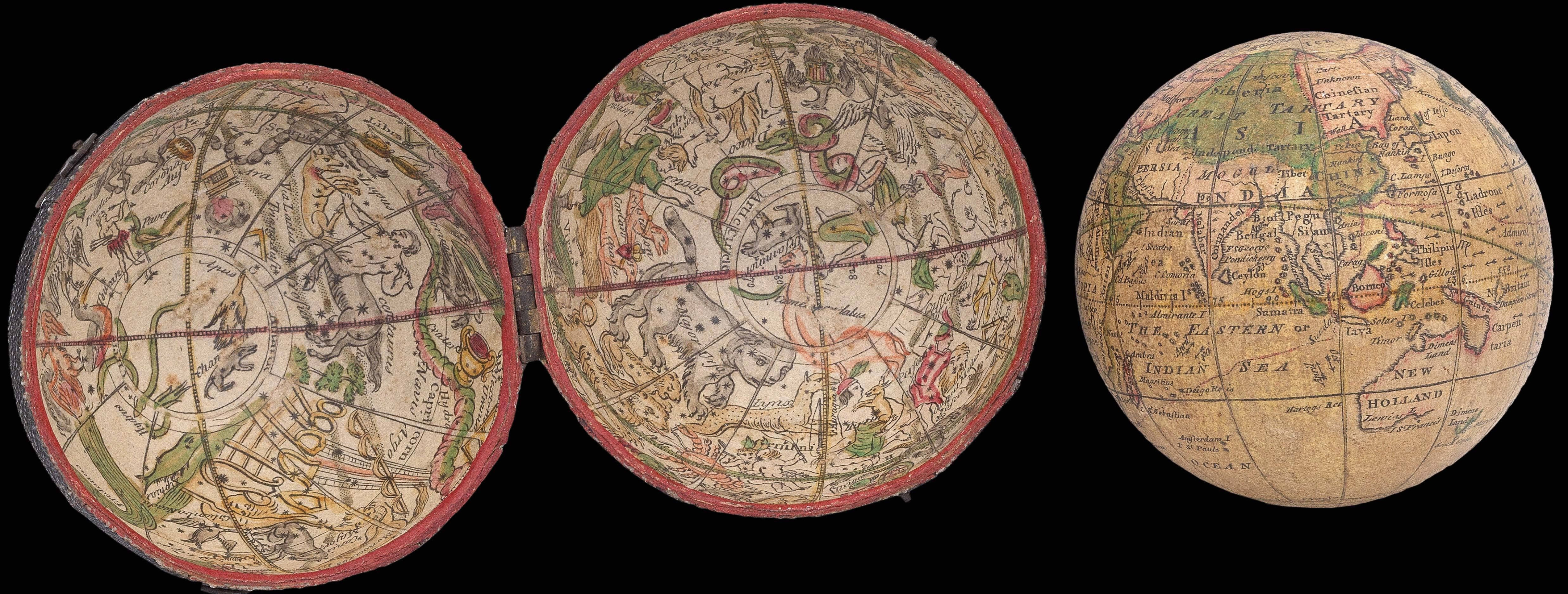
Altre copie dello stesso oggetto:
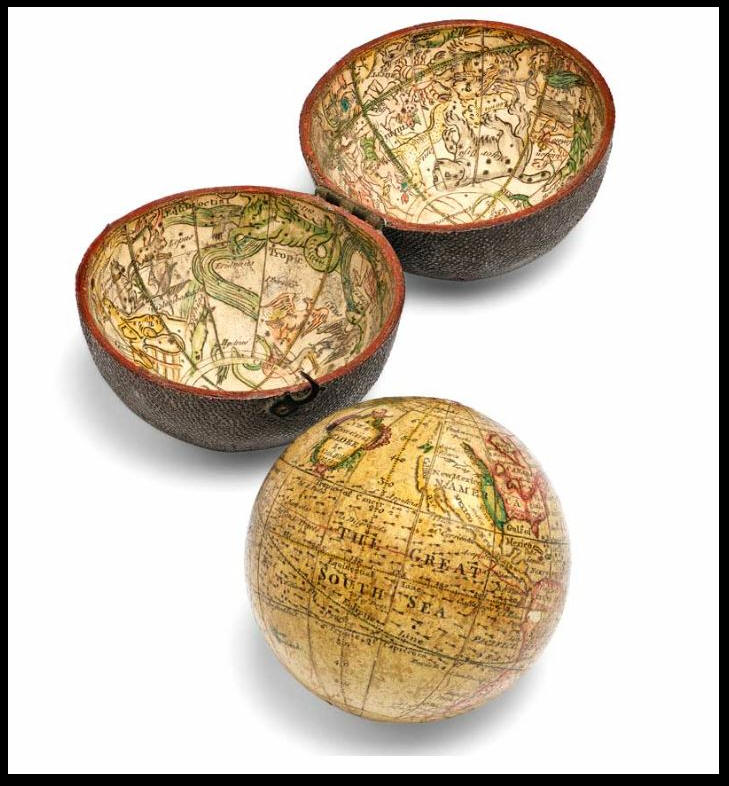
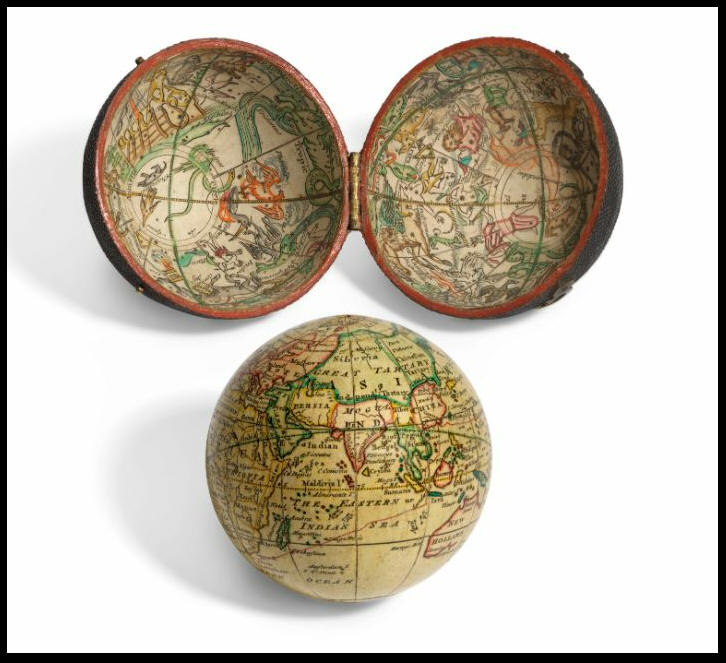
https://www.subert.it/pf/pocket-globe-nathaniel-hill-london-1754/?lang=en
https://www.christies.com/en/lot/lot-6204038
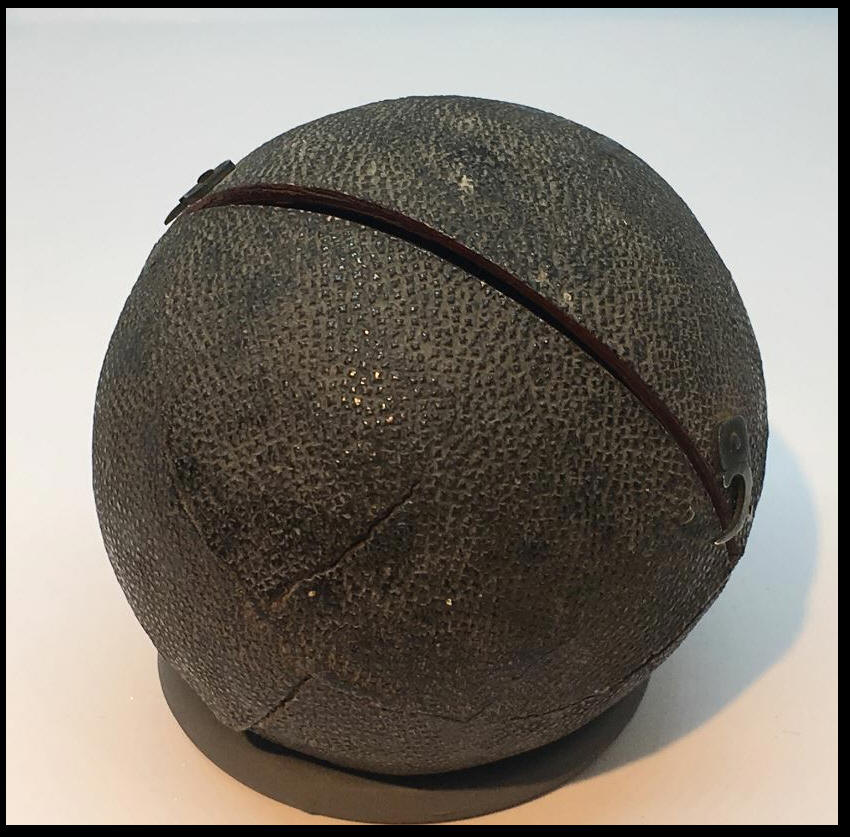
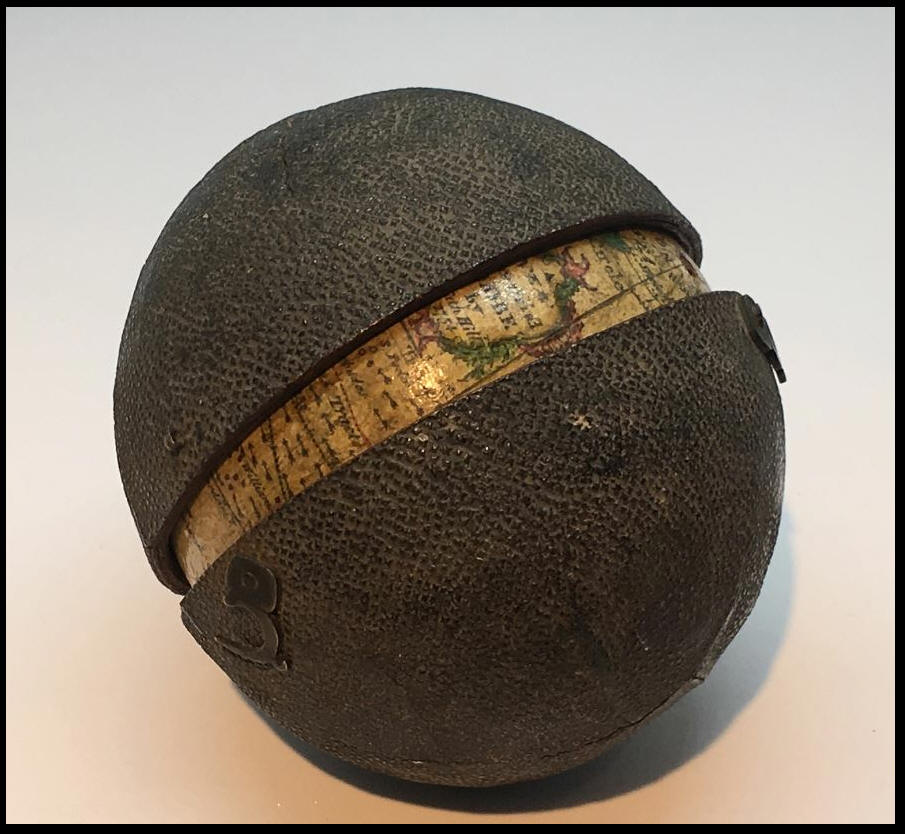
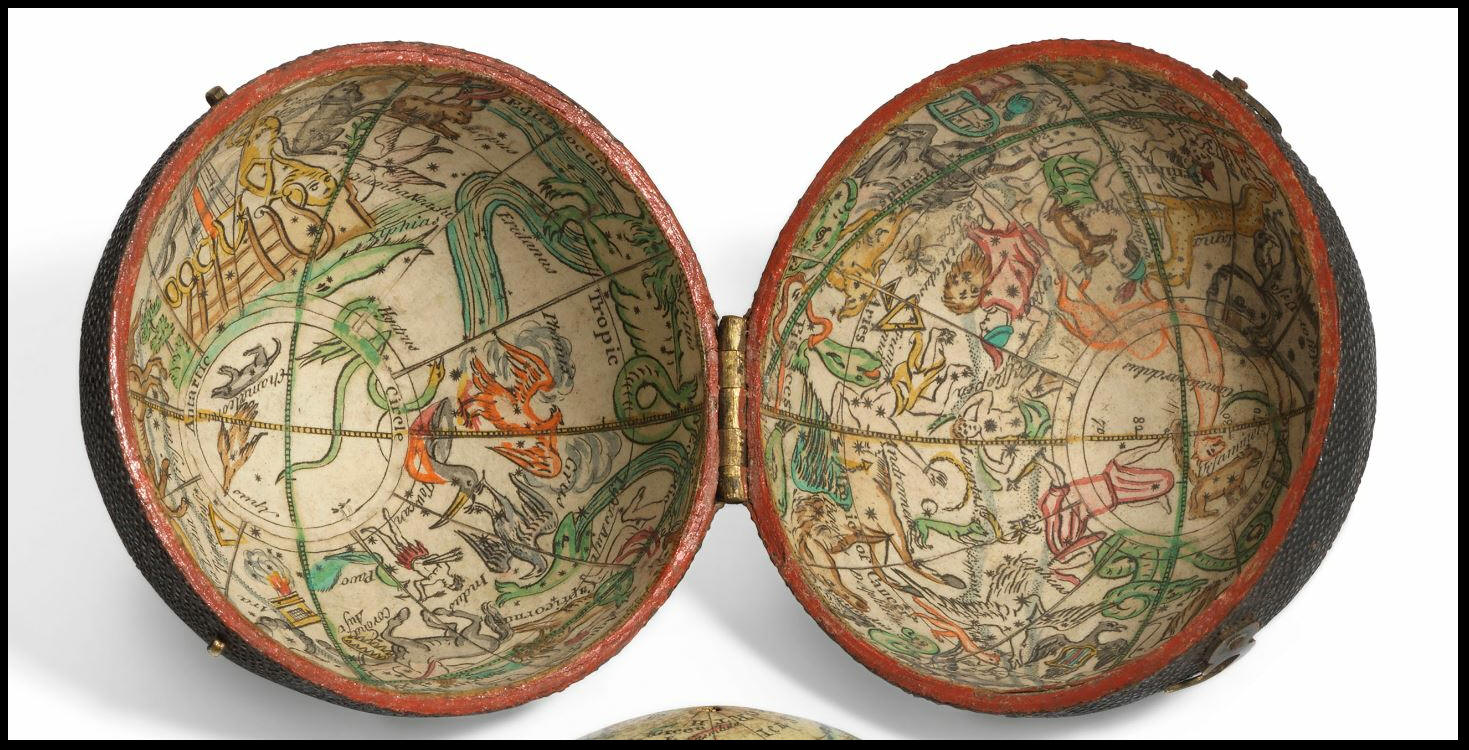
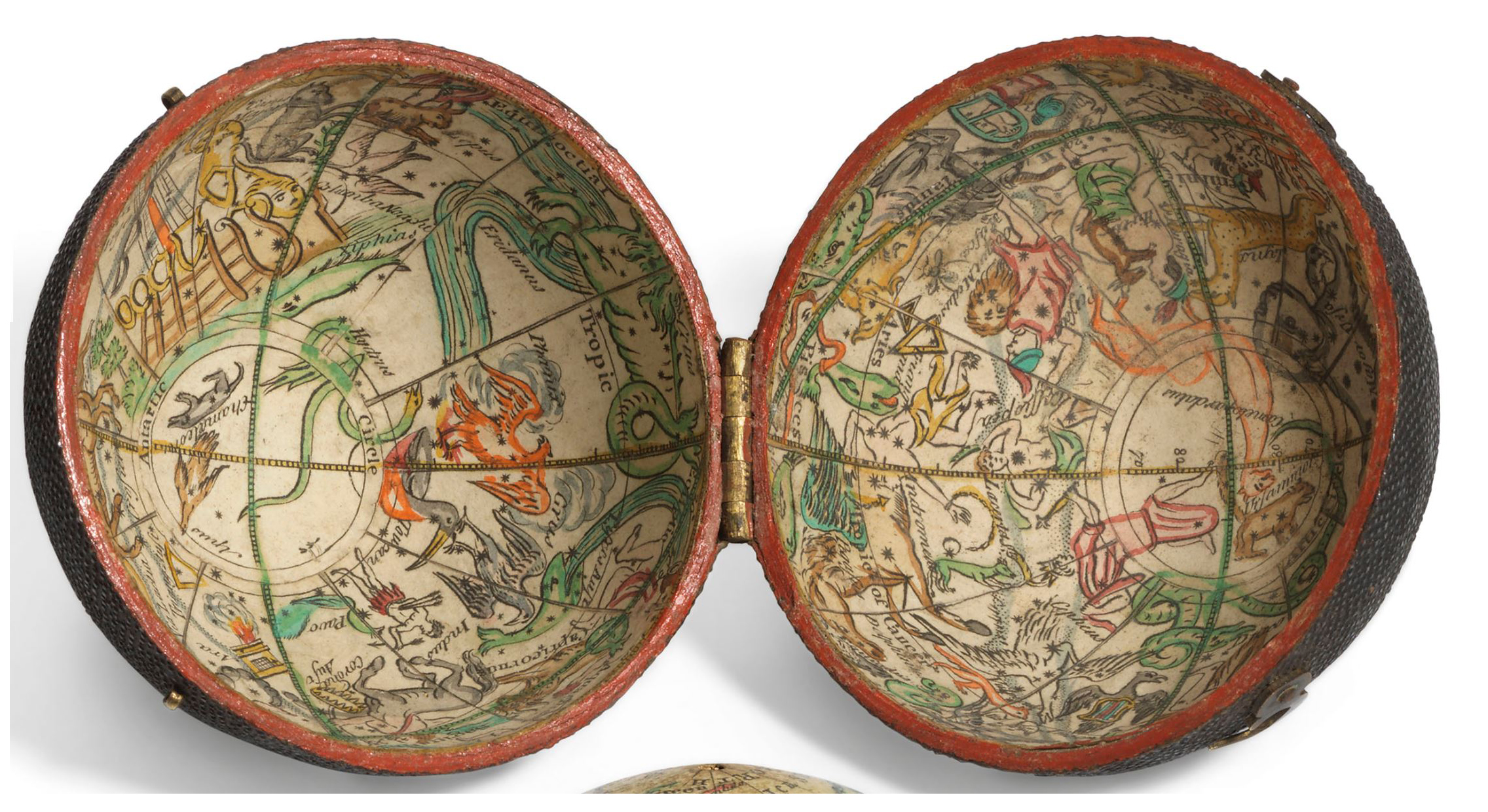
Seconda coppia di globi:
Pair of globes, London 1755 c.
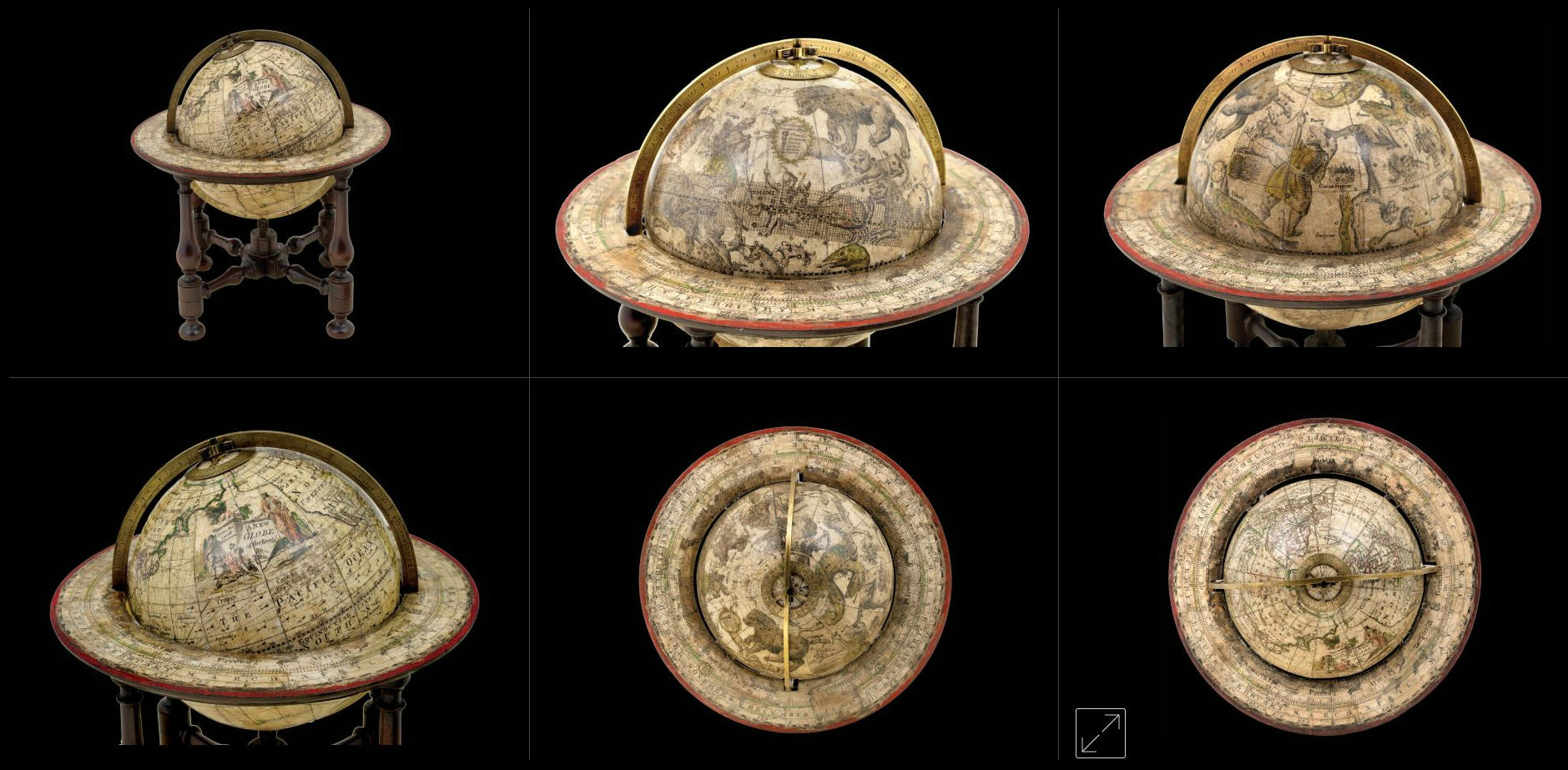
https://www.crouchrarebooks.com/globes-and-planetaria/hills-table-globes
The terrestrial globe
demonstrates the cartographical confusion that still surrounded some areas of
the world. Hill’s lack of knowledge of northwest America, as shown by the
inscription ‘Parts
Unknown’, leaves a substantial part of the continent blank and the coastline
unfinished. The title cartouche has been strategically placed in the Pacific
Ocean between America and Asia to avoid having to define the area more clearly.
The cartouche is bracketed by a male figure possibly meant to represent Perseus
(note the shield with a head of Medusa by his side), a female figure holding a
pair of dividers, and a putto. The Bering Strait separating America and Asia
appears but is unmarked, probably because its relationship to the northwestern
American coastline was still not properly understood, although Vitus Bering had
been the first European to sail it in 1728. Australia appears, albeit very out
of shape, marked as ‘New
Holland’, and a tiny section of ‘New
Zeeland’, after the discoveries of Abel Tasman. The Antipodes would not be
properly explored until the expeditions of James Cook, over a decade after this
globe was made.
The globe also incorporates a host of new discoveries and voyages, with a
patriotic preference for British adventurers. A line shows the route taken by
Admiral George Anson, who circumnavigated the world from 1740 to 1744. The
expedition set out to wreak havoc in the Spanish Main, and made a dramatic
return to London with a captured galleon, only a tenth of the crew still alive
and Anson in disgrace for summarily shooting a drunken crew member. The
explorations of the English sailors John Davis, Henry Hudson and William Baffin
are included in the Arctic.
The celestial globe shows the constellations drawn as figures over their star
charts. There is a key showing the various sizes and brightness of individual stars.
Bibliography:
Dekker, GLB0091 & GLB0092 Hide info
Dekker, Elly. (1999). Globes at Greenwich: A Catalogue of Globes and Armillery Spheres at the National Maritime Museum in Greenwich. Oxford: Oxford University Press and the National Maritime Museum.
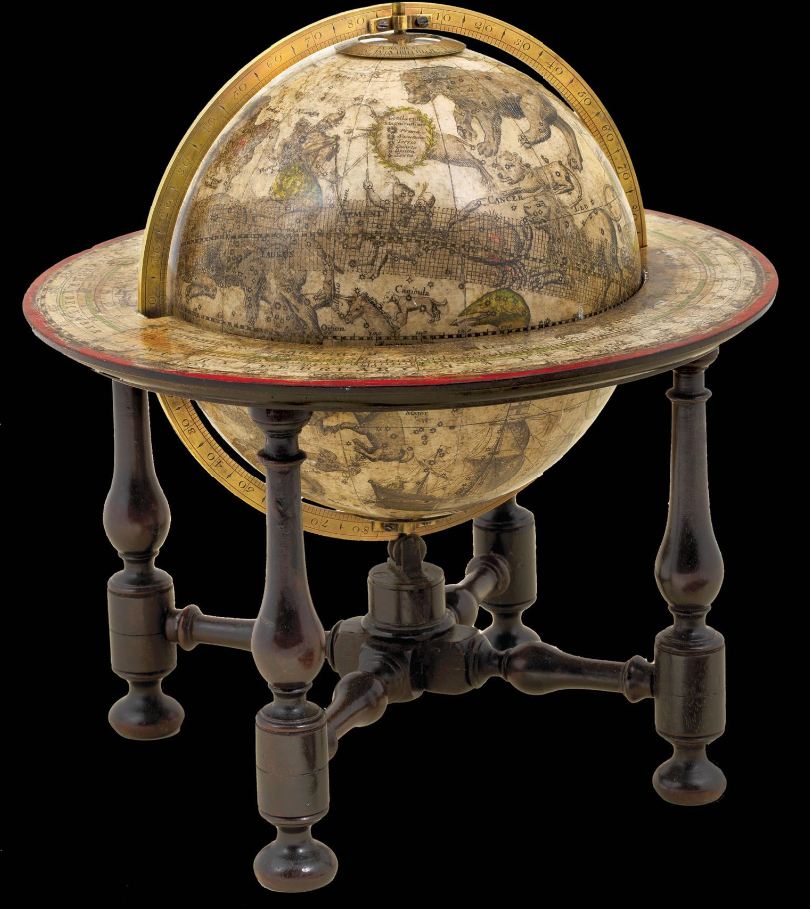
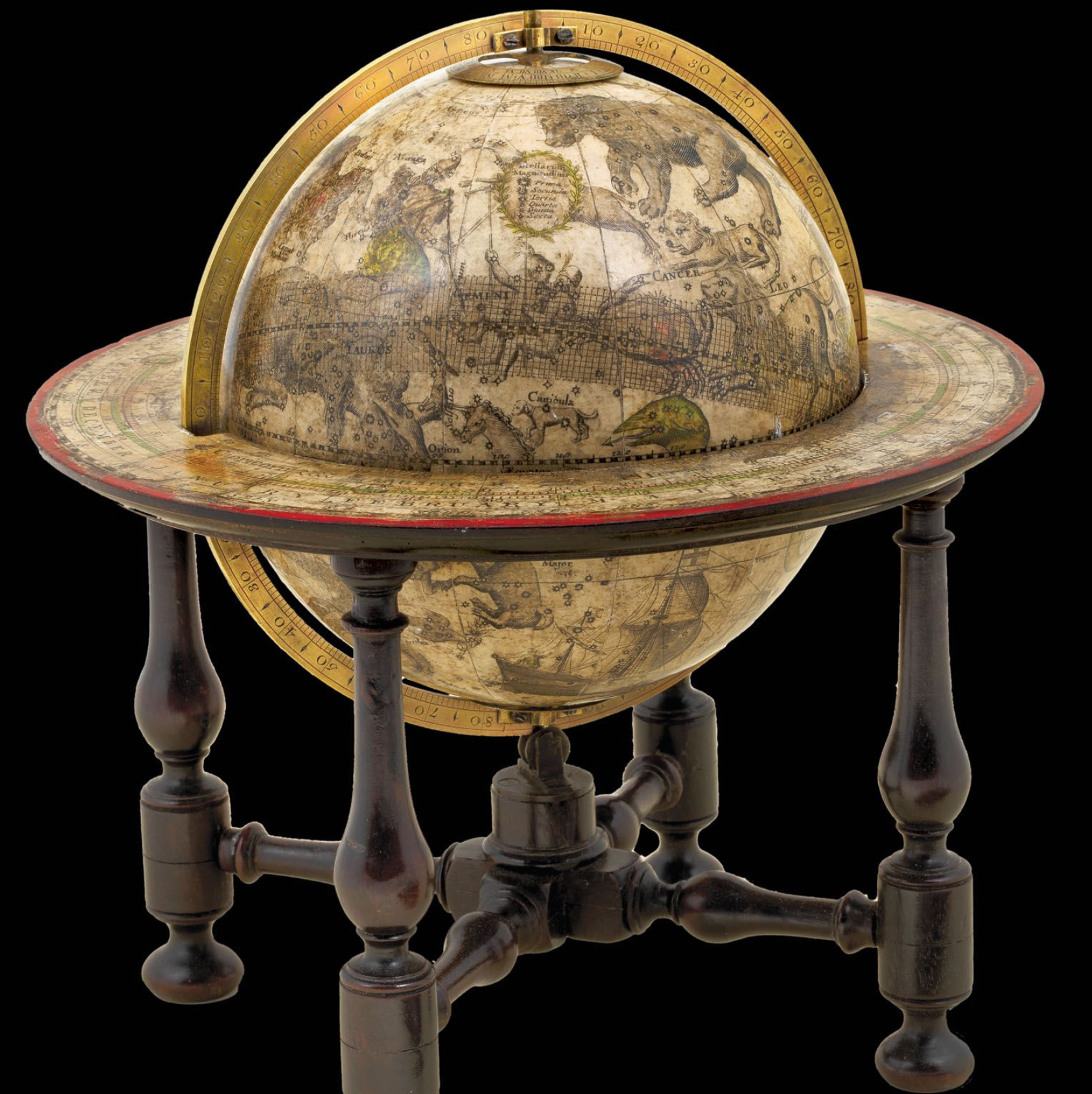
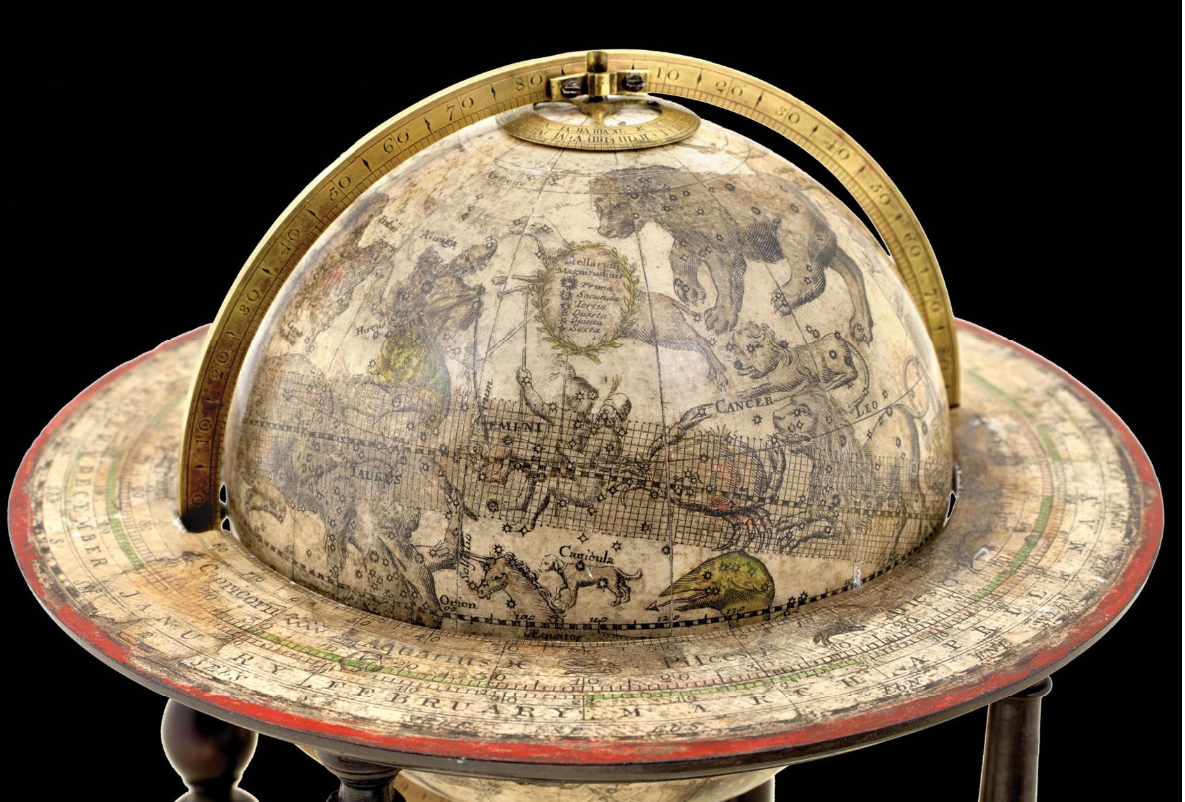
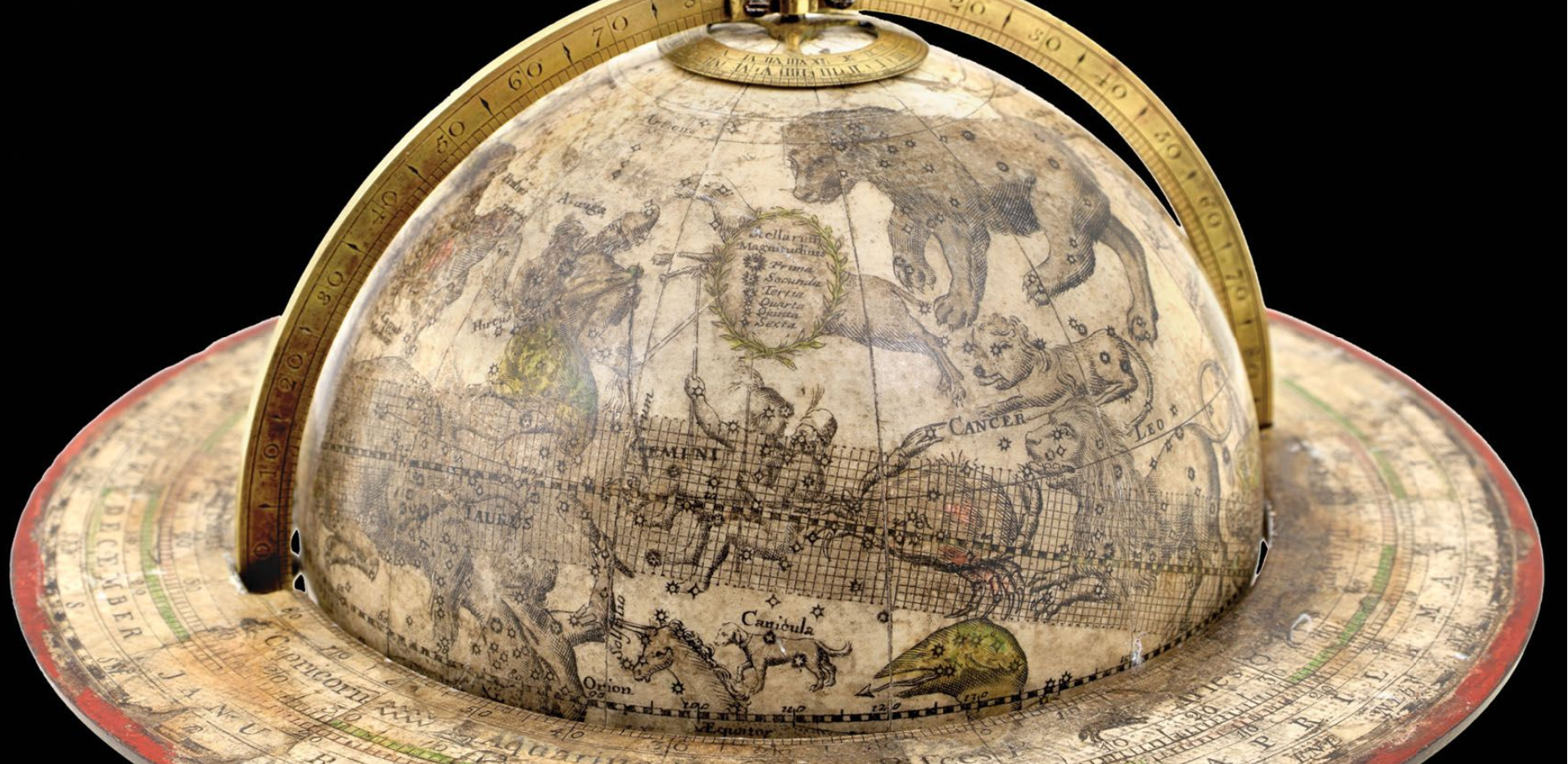
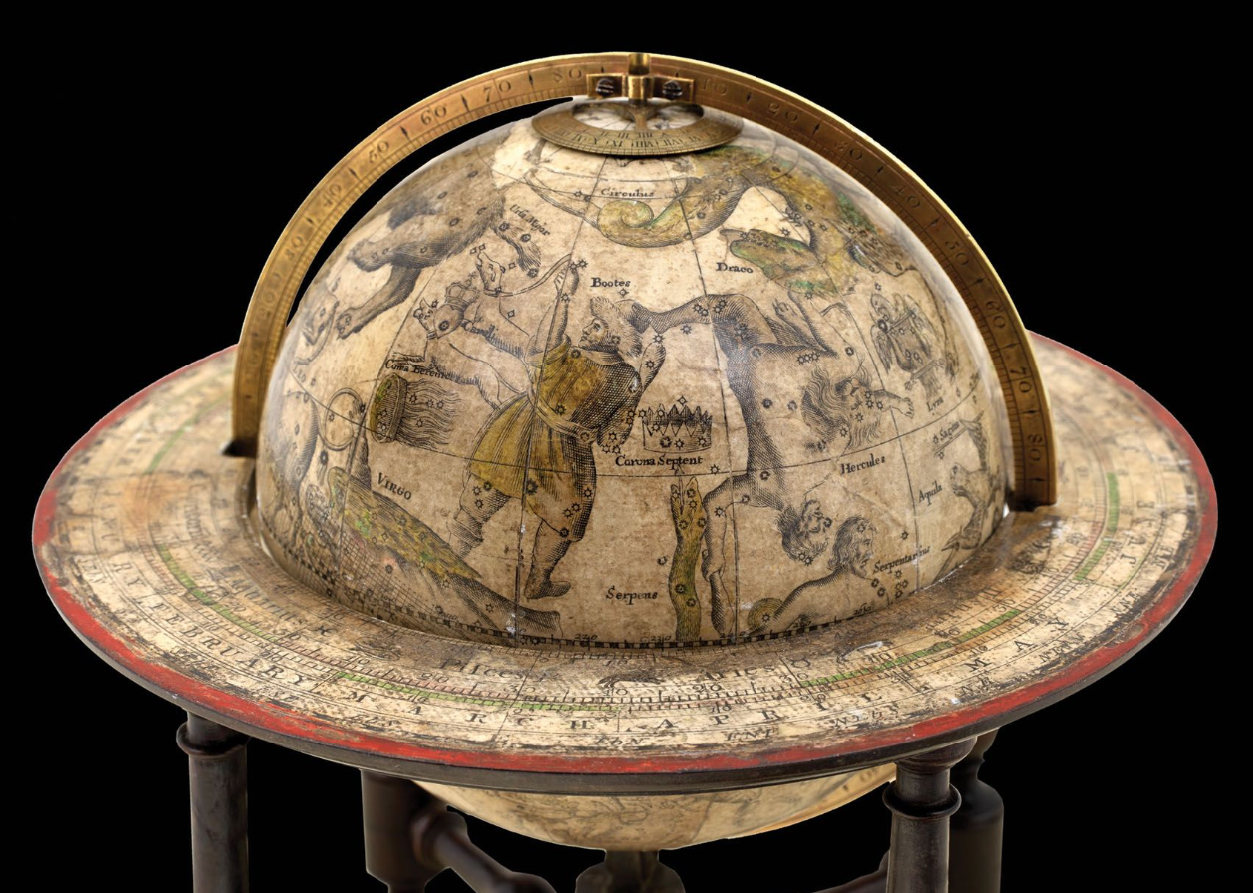
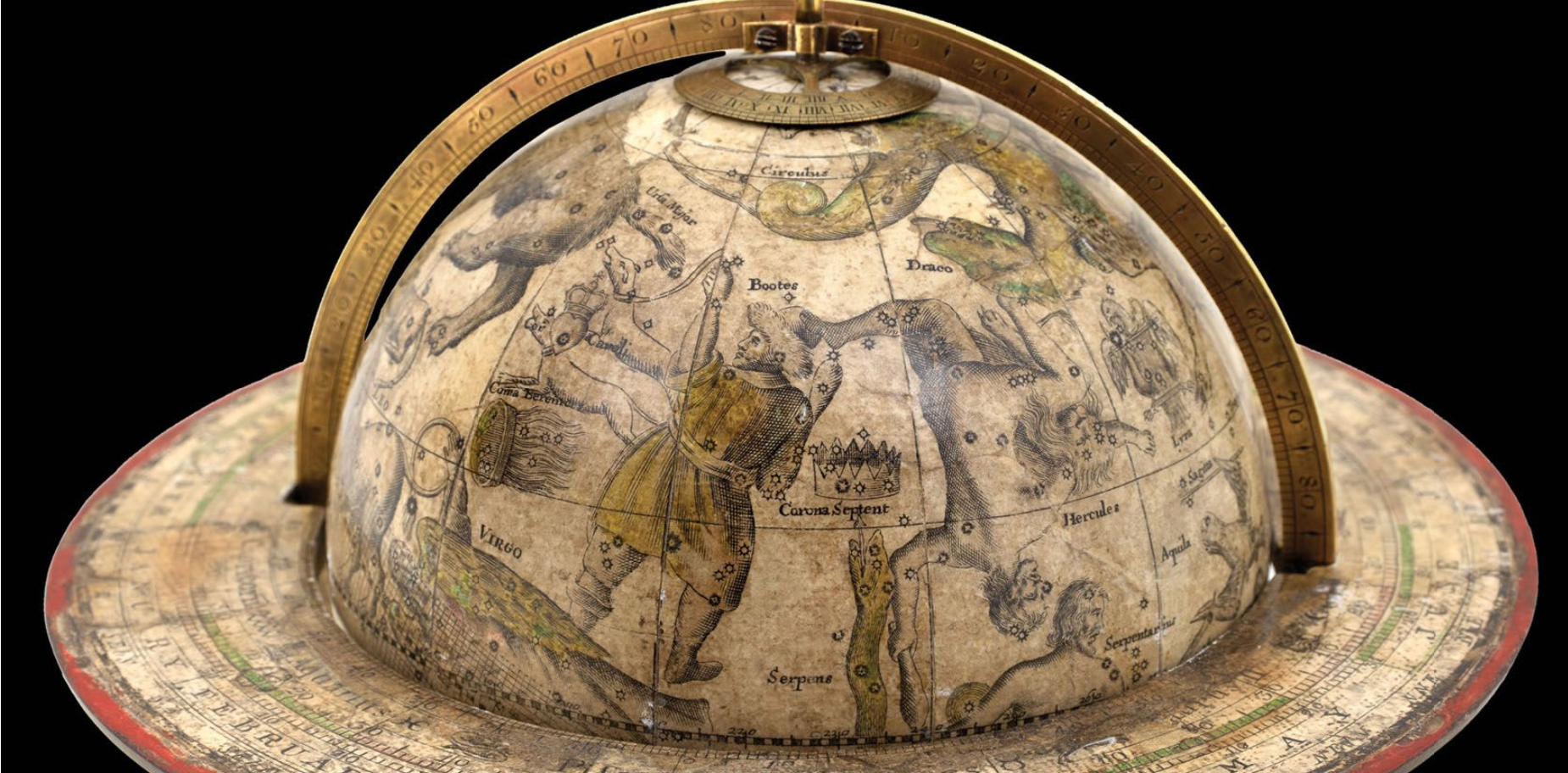
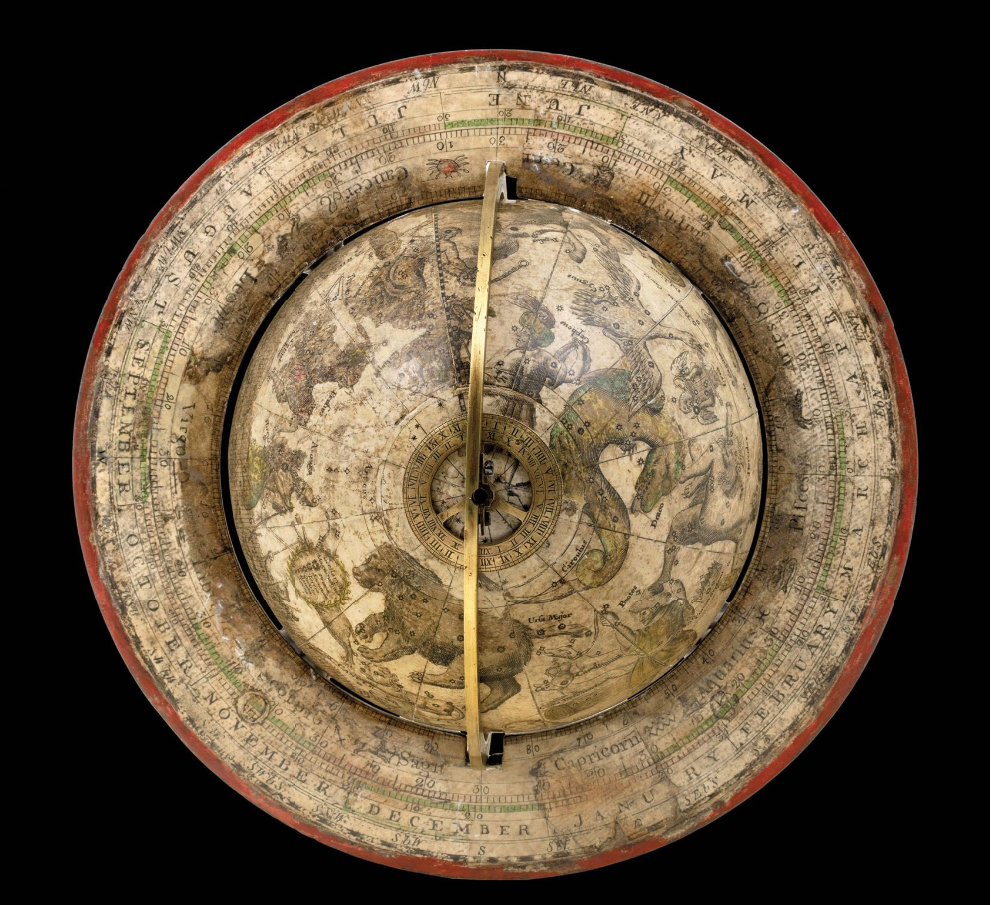
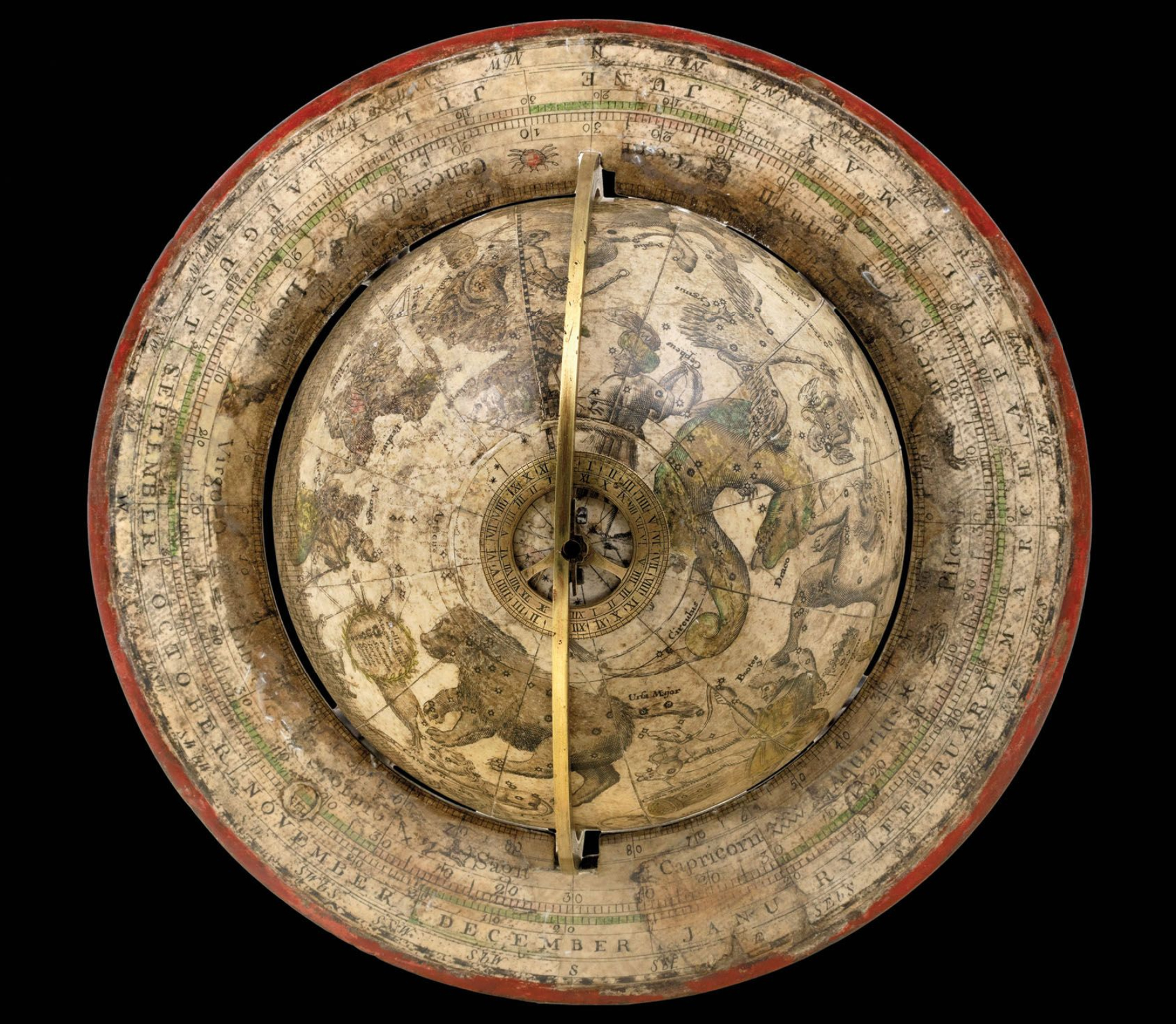
di FELICE STOPPA
APRILE 2023
